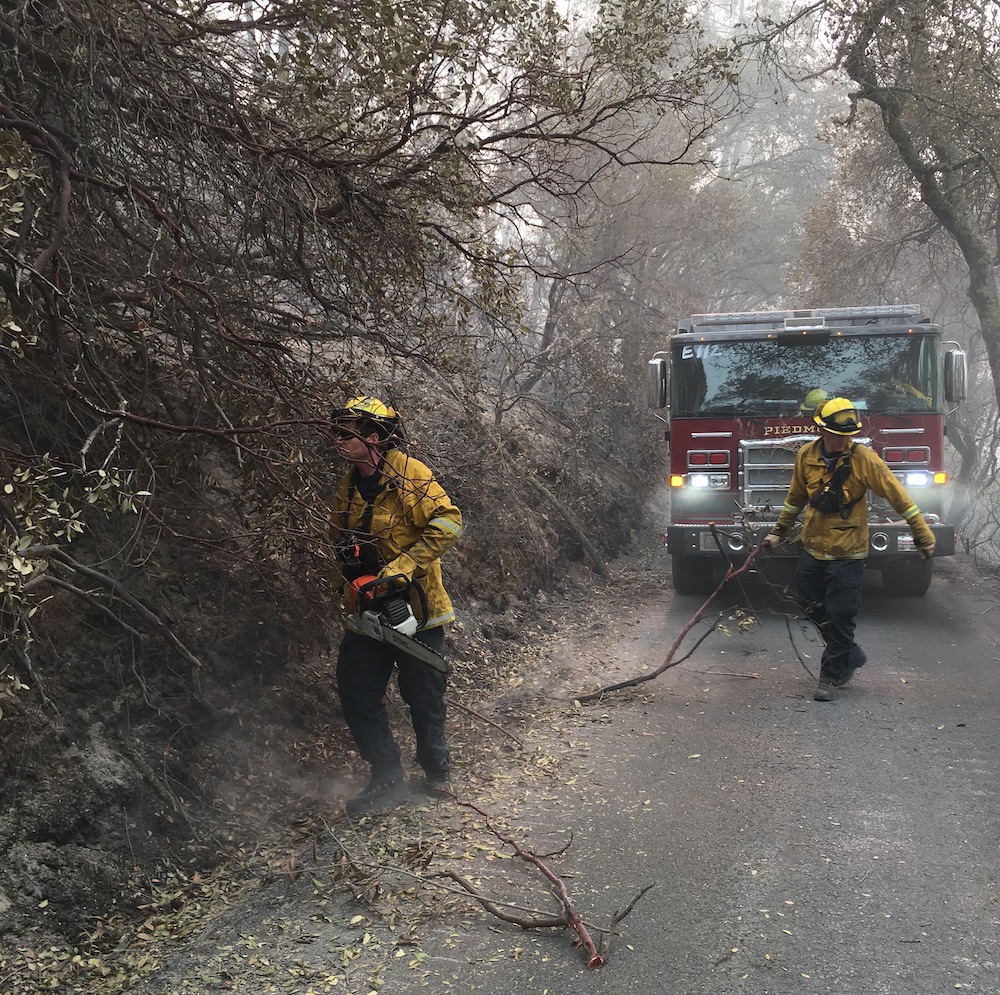As summer nears, many of our thoughts turn to barbecues, vacations, and days at the beach. As Piedmont’s Fire Chief, my mind goes to a thornier subject — the approach of fire season, a threat that looms larger each year as wildfires across California become more frequent and severe.
The urban forest that makes Piedmont so beautiful also brings vulnerability. The lush greenery brought on by heavy rains this winter will soon turn to thick, dry vegetation. While it’s not possible to extinguish wildfire risk entirely, we can all sprinkle a dose of protection on our community by taking a few simple steps –- starting in our own back (and front) yards.
I’m talking about vegetation management. Probably not the most glamorous task on your summertime to-do list, but one of the most important. Don’t “leaf” your most significant investment to chance – a well-prepared yard acts as a buffer zone, providing a layer of defense to your home in the event of a wildfire.
The first step in weeding out risk is to clear your yard of debris and flammable materials. Do you have leaves, pine needles on the ground or in your gutter? Get rid of them. Dead plants hiding on the property? They need to go. Using the space under your deck to store extra paint or propane containers? Move them elsewhere.
Next, you want to create space between plants, structures, and other objects. Trim your vulnerability by removing any branches that hang over your roof or near a chimney. Move patio furniture and wood piles away from vegetation. Prune trees so the lowest branches are at least 6 feet from the ground, or 3 times the height of shrubs below. By removing fuel sources that could act as a “ladder,” you make it harder for a fire to move from the ground to the treetops.
Finally, keep all vegetation in your yard in good health. People often ask me whether a specific type of tree or shrub is safe to plant. My response is that I’m species agnostic. Native plants evolved to be adapted to fire conditions here in California. But even non-natives, if well maintained and watered, can be fire resistive. Whatever landscaping you’ve chosen, you can stem fire risk by trimming away dead or dying material. Remove shedding bark and leaves from Eucalyptus trees, which are especially flammable. It’s best to not have plants within five feet of your home, but if you do, take extra care to keep them well watered.
Taking these simple, but essential steps to prepare your yard at the beginning of every summer will create the peace of mind that comes with knowing you’ve done what you can to protect your property.
Even better, your actions will serve as a model for others. The steps we take as individuals have the potential to ignite a ripple effect, spreading awareness and inspiring our neighbors to prepare their own yards. When each of us plants the seeds of safety on our own property, we cultivate a collective defense, increasing the likelihood of slowing or containing spread of a wildfire.
Find helpful tools, including a printable yard-maintenance checklist and links to other useful resources on our website. And remember, your fire department is here to help. If you have questions or would like us to come inspect your yard, call us at (510) 420-3030. Let’s blaze a safer path together!
